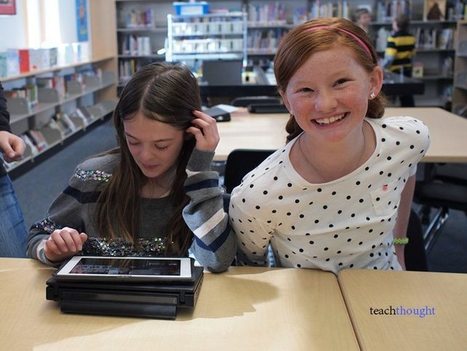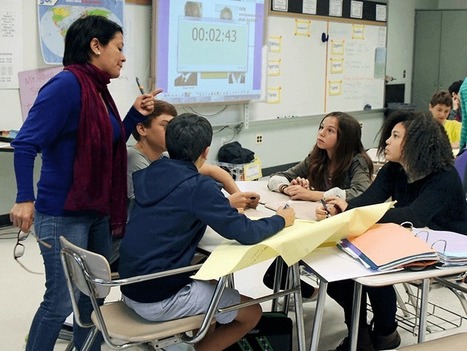 Your new post is loading...
 Your new post is loading...
I have been teaching various levels of reading skills and composition to native and non-native speakers, to immigrants and U.S. citizens, to people with talent and interest, and I have one thing to say:
In order to teach well, you need to learn something that does not come easy.
Ed note: This post is promoted by SEU’S online masters in education programs. SEU simply asked us to write about how learning is changing and the updated kinds of things teachers need to know, and to let you know about their program. So here we are.
As teachers, when we lecture, we have the best of intentions. We have a concept we want the class to understand, so we stand and explain it to them. We give them background. Offer details. Anticipate and pre-empt common misconceptions. Illuminate the more entertaining bits. Emphasize the nuance.
So explaining things isn’t “bad,” so how about beginning with some clarification. Talking is not lecturing–it’s talking. Talking with students and expecting them to respond meaningfully isn’t lecture–that’s accountable talk, which itself is close to a Socratic dialogue or Paideia seminar. Explaining an idea verbally, especially if being done to clarify a context or history of circumstance–can be a powerful tool if used expertly.
In addition to literacy strategies, approaches to assessment, and grouping strategies (among many others), knowing the right teaching strategy for the right academic situation may not be a matter of expertise or training, but memory: out of sight, out of mind, yes?
Which makes the following infographic from fortheteachers.org useful.
While it doesn’t offer definitions and explanations for each strategy (it’s an infographic, not a book), and many great strategies are missing (e.g., 3-2-1, exit slip, project-based learning, accountable talk, ask a question, etc.) it does work well as a kind of reminder for what’s possible, even offering categories for each strategy, from progress monitoring (think-pair-share, KWL charts), to Note-Taking (graphic organizers).
There are 87 instructional strategies listed below, but several are repeated across categories, so let’s call it “50+” strategies.
Via John Evans, Dean J. Fusto
How to utilize learning objectives in the classroom. In this interactive video we dive into a lesson where the instructor makes the most of learning objectives with her students.
How do you motivate students who don't care about grades? You take a turn with badges in education and see how different results can come about.
|
With video in learning one can feel as though one is learning, as the medium holds your attention but as you are hurtled forward, that knowledge disappears off the back. It’s like a shooting star; looks and feels great but the reality is that it burns up as it enters the atmosphere and rarely ever lands.
15 Reflection Strategies To Help Students Retain What You Just Taught Them by Terry Heick Reflection is a natural part of learning. We all think about new experiences–the camping on the car ride home, the mistakes made in a game, or the emotions felt while finishing a long-term project that’s taken months to complete. Below …
Via Ana Cristina Pratas
One of the challenges of the flipped classroom is building meaningful connections between the pre-work and the in-class sessions. Opponents of the flipped classroom argue that information overload can easily occur in flipped classrooms (Benitez, 2014). Furthermore, while many instructors prefer to use short videos or online modules for the delivery of the pre-work, active learning strategies in the classroom need not be tech heavy. The greatest benefit to using the flipped classroom is the implementation of active learning strategies within the repurposed class time (Michael, 2006; Jensen et al., 2015).
All of us face new realities that threaten our pedagogy.. But it is often in the midst of those pressures that new pedagogies flourish.
|
 Your new post is loading...
Your new post is loading...
 Your new post is loading...
Your new post is loading...




















